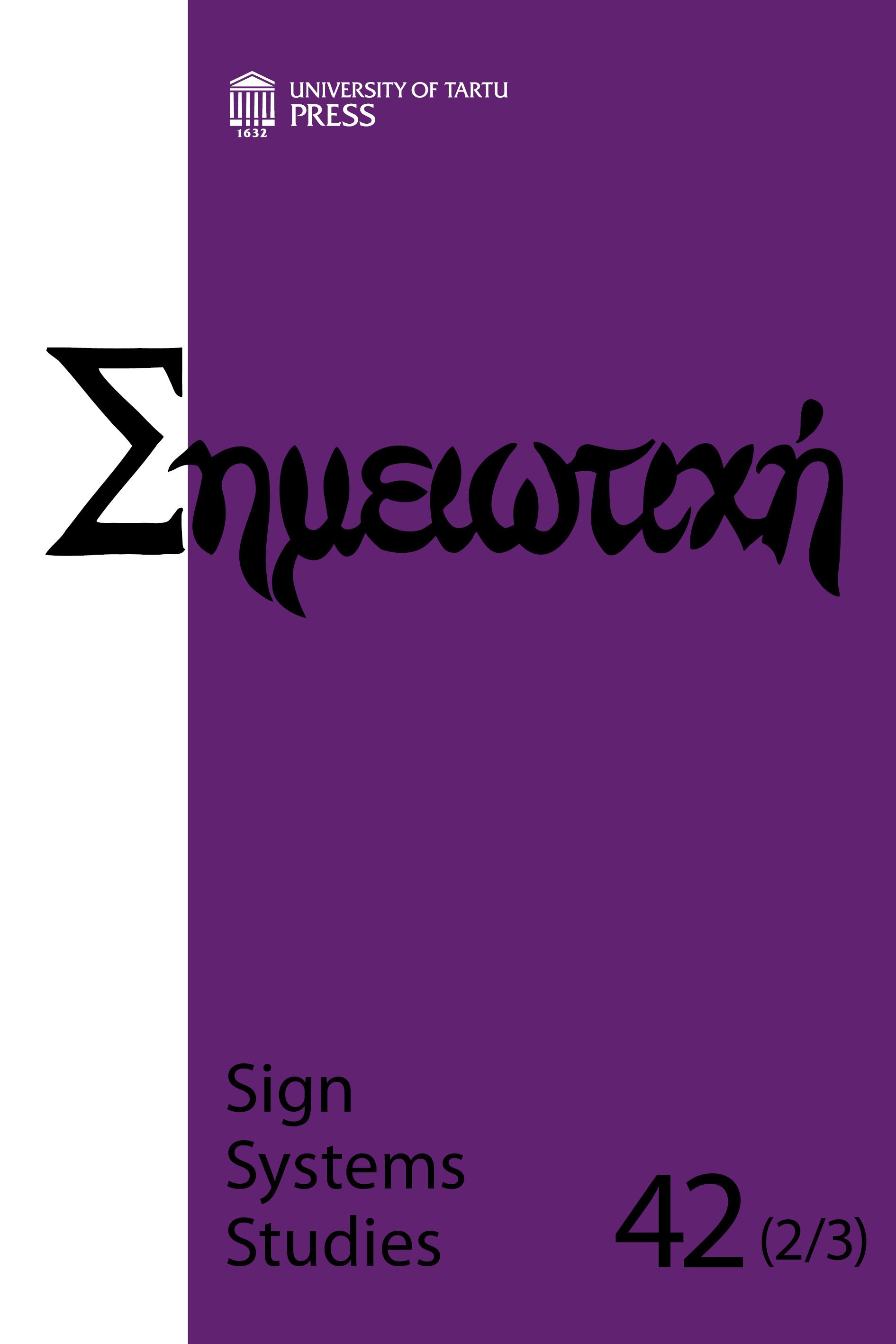Fitting issues: The visual representation of time in family tree diagrams
DOI:
https://doi.org/10.12697/SSS.2014.42.2-3.05Keywords:
family tree diagrams, genealogical diagrams, semiotic developmentAbstract
Family tree diagrams are a specific type of visual representation of time that serve a range of purposes. This research considers their semiosic development across western cultures using cases from the earliest extant copies of the eighth century to current online versions. Cases are taken from the fields of religion, genealogy, history, anthropology, genetics, and popular culture. The paper begins with a general model of tree design based upon the linguistic representation of time, or tense, and then discusses in case study fashion, how each design was composed to support its use. Composition is discussed using the visual variables of the direction of time on the page, the key reference point, scale, alphanumeric and pictorial symbols, symbol positions, and the size, colour, tone, and texture of symbols and graphic elements. The paper argues that choices for the direction of time flow in a tree (e.g. left-to-right, right-to-left, top-down, etc.) depend upon many factors, which are the use of the diagram, the amount of information that needs to fit onto the page, patterns of reading and writing, aesthetic needs, the linguistic metaphor of descent, cultural values, and the “ideal-real” continuum that exists along the vertical axis for some types of graphics.Downloads
Download data is not yet available.
Downloads
Published
2014-12-05
How to Cite
Mitchell, M. (2014). Fitting issues: The visual representation of time in family tree diagrams. Sign Systems Studies, 42(2/3), 241–280. https://doi.org/10.12697/SSS.2014.42.2-3.05
Issue
Section
Articles


